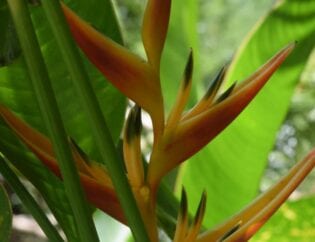
Automatic garden watering systems deliver water throughout a garden or lawn via a set-up of irrigation pipes and emitters.
There are various types of garden watering systems that are designed for different uses. They include dripper systems that release water slowly to individual plants; sprinkler systems that emit water in a spray; and soaker systems that use a permeable pipe that hydrates the plants along its length.
All these systems can be automated either with a controller or by connecting them to a timer.
Benefits of Automated Garden Watering Systems
• Regularly deliver the water that your plants need
• Ensure your garden is hydrated even when you’re away from home
• Maintain the vitality of your landscape
• Save up to 80 percent of water compared to manual watering
• Boost the valuation of your home when you put it in the market
Pros and Cons of Various Automatic Garden Watering Systems
Drip Garden Watering Systems
Drip systems are the most water-efficient garden watering systems. They are designed to channel water directly to the root zone of plants. They work via a network of tubes and inline emitters, micro-sprayers, or bubbler nozzles.
Pros
Drip-based watering systems release water slowly and in steady increments, so they have better control of the volume of water that’s delivered and thus limit water waste. They are ideal for flowerbeds and borders, greenhouses, and vegetable patches.
Studies show that drip systems, when properly designed and installed, use up to 50 percent less water compared to other garden watering systems. Also, because they deliver water at the root level, there is no soil run-off, and more water is absorbed by the plant even in challenging soil types like clay or sand.
Cons
Like any watering system, drip irrigation systems require regular maintenance. You have to regularly maintain the filters by periodically flushing them to prevent mineral build-up and clogging.
The drip irrigation tubing can wear out fast if it’s exposed to direct sunlight. And you can easily damage the pipes when working with power tools in your yard.
Spray Garden Watering Systems
Automated spray systems can be used to deliver water to multiple landscape features including gardens, shrubs, and lawns. The basic spray system setup incorporates a controller that operates the system, valves that discharge water to pipes, and sprinklers which spray water onto the plants.
There are two types of sprinklers: pop-up style sprinklers which lie below ground and only pop-up when turned on, and shrub style sprinklers that are installed on vertical pipes above ground.
Pros
Spray sprinklers enable you to water your garden or yard swiftly. Many spray watering systems can be customized to include rain shut-off apparatus, soil moisture sensors, and other devices that improve functionality. Spray heads can also be adjusted to provide the ideal water for your landscape.
Cons
Automated spray systems are not ideal for steep or sloped yards; they work best on flat terrain. Spray systems are also less effective in clay or sandy soil types. In these types of soils, the slow and steady drip systems works better than the fast and forceful spray system- which can lead to pooling and run-off.
Soaker Garden Watering Systems
Soaker watering systems rely on a soaker hose – a permeable pipe that provides deep soaking action by slowly releasing water along its length.
Pros
Soaker systems are simple and easy to set up; all you have to do is lay the pipe in the area you want to water and then connect it to a garden hose. They are also easy to automate as all you need to do is connect the soaker hose to a faucet timer.
Soaker systems are also relatively affordable and don’t require flow regulators, filters, or emitters.
Cons
Soaker systems are less precise compared to drip systems. Due to the porous nature of soaker hoses, they emit water throughout the length of the hose and so they may water your garden plants as well as the weeds.
Also, soaker systems are not as customizable and versatile as drip garden watering systems. They don’t work well in hilly or irregularly shaped gardens, and they don’t allow you to close off some sections.
Water Timers
Timers are the ‘brains’ of a garden watering system. They automate everyday watering, meaning you don’t need to start or switch off the system.
The ideal time to water your lawn is in the morning, between 5:00 and 9:00 am. Whenever you water your garden, plant foliage becomes wet. When you water your plants in the morning, the foliage dries quickly. This is important because wet plant foliage creates a perfect environment for the growth of fungus. Additionally, with the calm breezes and cooler temperatures, loss of water to evaporation is minimal.









